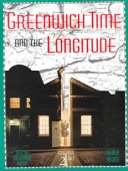 I am being used as a proxy reader! My colleague drj, impressed by my reviewing activities, asked me to read Greenwich Time and the Longitude by Derek Howse, so that he wouldn’t have to.
I am being used as a proxy reader! My colleague drj, impressed by my reviewing activities, asked me to read Greenwich Time and the Longitude by Derek Howse, so that he wouldn’t have to.
There was some risk here that Greenwich Time and the Longitude would overlap heavily with Finding Longitude which I have recently read. They clearly revolve around the same subjects and come from the same place: the National Maritime Museum at Greenwich. Happily the overlap is relatively minor. Following some brief preamble regarding the origins of latitude and longitude for specifying locations, Greenwich Time starts with the founding of the Royal Observatory at Greenwich.
The Observatory was set up under Charles II who personally ordered it’s creation in 1675, mindful of the importance of astronomy to navigation. The first Royal Astronomer was John Flamsteed. Accurate measurement of the locations of the moon and stars was a prerequisite for determining the longitude at sea both by lunar-distance and clock based means. Flamsteed’s first series of measurements was aimed at determining whether the earth rotated at a constant rate, something we take for granted but wasn’t necessarily the case.
Flamsteed is notorious for jealously guarding the measurements he made, and fell out with Isaac Newton over their early, unauthorised publication which Newton arranged. A detail I’d previously missed in this episode is that Flamsteed was not very well remunerated for his work, his £100 per annum salary had to cover the purchase of instruments as well as any skilled assistance he required which goes some way to explaining his possessiveness over the measurements he made.
Greenwich Time covers the development of marine chronometers in the 18th century and the period of the Board of Longitude relatively quickly.
The next step is the distribution of time. Towards the middle of the 19th century three industries were feeling the need for precise timekeeping: telegraphy, the railways and the postal service. This is in addition to the requirements of marine navigators. The first time signal, in 1833, was distributed by the fall of a large painted zinc ball on the top of the Greenwich observatory. Thereafter, strikingly similar balls appeared on observatories around the world.
From 1852 the time signal was distributed by telegraphic means, and ultimately by radio. It was the radio time signal that ultimately brought an end to the publication of astronomical tables for navigation. Britain’s Nautical Almanac, started in 1767, stopped publishing them in 1907 – less than 10 years after the invention of radio.
With the fast distribution of time signals over large distances came the issue of the variation between local time (as defined by the sun and stars) and the standard time. The problem was particularly pressing in the United States which spanned multiple time zones. The culmination of this problem is the International Date Line, which passes through the Pacific. Here the day of the week changes on crossing the line, a problem discovered by the very first circumnavigators (Magellan’s expedition in 1522), identified when they reached travellers who had arrived from the opposite direction and disagreed on the day of the week. I must admit to being a bit impressed by this, I can imagine it’s easy to lose track of the days on such an expedition.
I found the descriptions of congresses to standardise the meridian and time systems across multiple nations in the 1880s rather dull.
One small thing of interest in these discussions: mariners used to measure the end of the day at noon, hence what we would call “Monday morning” a mariner would call “the end of Sunday”, unless he was at harbour – in which case he would use local time! It is from 18th century mariners that Jean Luc Picard appears to get his catchphrase “Make it so!”, this was the traditional response of a captain to the officer making the noon latitude measurement. The meridian congresses started the process of standardising the treatment of the day by “civilians”, mariners and astronomers.
The book finishes with a discussion of high precision timekeeping. This is where we discover that Flamsteed wasn’t entirely right when he measured the earth to rotate at a constant rate. The earth’s rotation is showing a long term decrease upon which are superimposed irregular variations and seasonal variations. And the length of the year is slowly changing too. Added to that, the poles drift by about 8 metres or so over time. It’s testament to our abilities that we can measure these imperfections but somehow sad that they exist.
The book has an appendix with some detail on various measurements.
Not as sumptuous a book as Finding Longitude it is an interesting read with a different focus. It has some overlap too with The History of Clocks and Watches by Eric Bruton.

